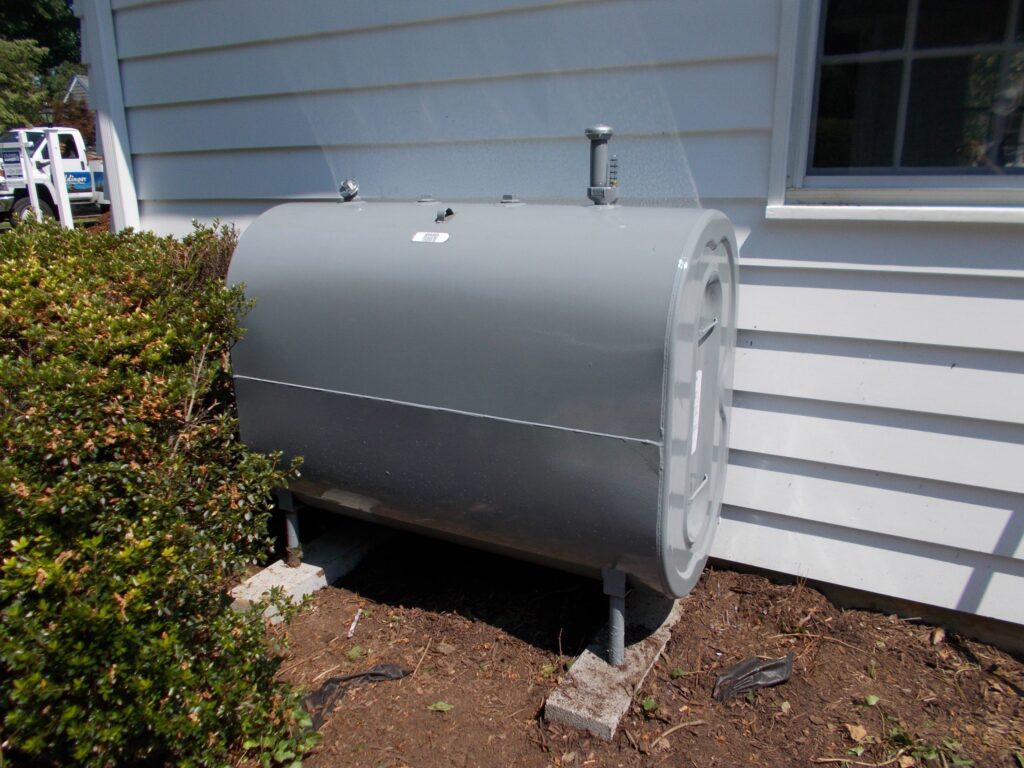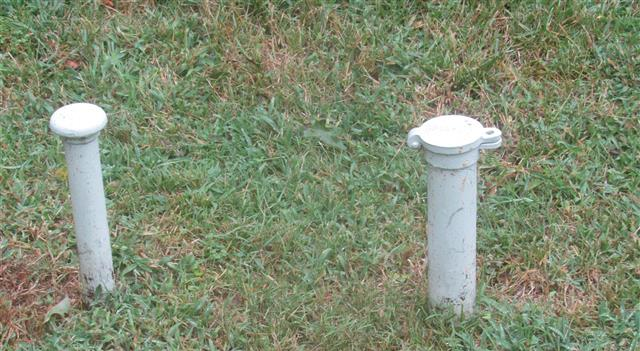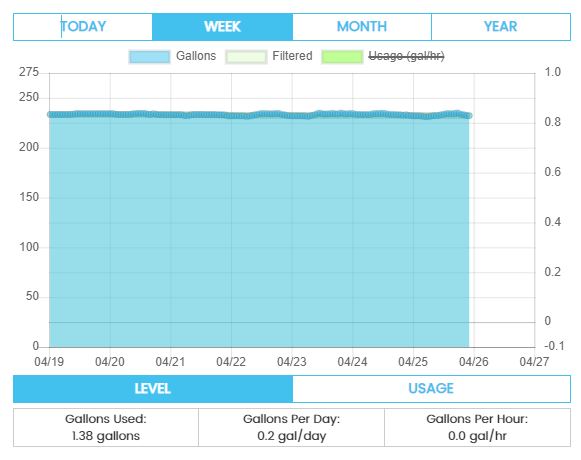The Smart Oil Gauge is a useful tool that can tell you how much oil is in your tank, how much you’re burning, and much more! You can install it on both indoor and outdoor tanks. However, using it on an outdoor tank is a little bit different than using it on an indoor tank in your basement. There is a little bit more to know and be aware of when using the gauge on an outdoor heating oil tank. I’ll be covering what you need to know in this article!
The Outdoor Model
The most important thing to know is that there is an outdoor model for the Smart Oil Gauge. This outdoor model is what we recommend you use when installing the Smart Oil Gauge on an outdoor heating oil tank. What is the difference between the indoor and outdoor models you might be asking? Well, the biggest difference to be aware of is that it’s designed with a special sealant on the sensor that makes it less susceptible to the elements. If you have an outdoor tank and wish to use the Smart Oil Gauge, you must buy the outdoor model. You can purchase it by using this link here.

Installation On Outdoor Tanks
When installing the Smart Oil Gauge on your outdoor heating oil tank, it’s important to know that there isn’t much of a difference between installing it on an outdoor tank compared to an indoor one. Before the Duo was released, we used to have a standard outdoor model. However, since the outdoor Duo provides a much better seal than the outdoor standard did, we’ve discontinued the standard outdoor model. So there is no need to apply Teflon tape to the top threads of the Duo Model!
Additionally, it is important to note that the Smart Oil Gauge is NOT compatible with underground oil tanks. This is because the gauge’s signal gets sent out in a cone shape. So if you were to go ahead and install it on either the fill or vent pipe of the tank, it would not read down in the tank. It would bounce off the sides of the piping and always come back as full.

Condensation on the Sensor
Condensation on the sensor itself is common on outdoor tanks. This is because as the sun hits the tank, the oil will produce vapors that will get stuck on the sensor producing moisture and condensation. This can cause the gauge to read all sorts of strange readings. These can range anywhere from full, to empty to fluctuating between the two. Despite these readings being all over the place, this is very easy to fix. All you have to do is take the gauge off the tank and wipe the sensor clean with a dry cloth like a paper towel or washcloth. Doing so will clean off any moisture or condensation on the sensor itself. This will help to ensure your gauge is reading accurately.
To prevent this from happening often, it’s wise to take the gauge off the tank and wipe the sensor clean with a dry cloth every month or so. This can help prevent moisture from building up on the sensor and help clear off any moisture that’s already growing so that the gauge can read accurately. Making sure that the gauge itself is cleared of any moisture or condensation will be able to better benefit the Smart Oil Gauge in it’s ability to read accurately.
The Readings on an Outdoor Heating Oil Tank
While this might come as a shock to some, the readings on outdoor tanks can sometimes be a little odd. This is mostly due to the frequent temperature changes outside and how to sun hits the tank. As it tends to get warmer out, the oil in the tank will expand as it is warmed up from the outside temperature. The same applies to when the sun hits the tanks. This will cause the oil level in the tank to expand. Upon doing so, the gauge will read a bit of oil in the tank then it will slowly go down and back up again. Kind of giving the readings a “wavy” effect. This will cause the readings to rise and dip. If you see this, there is no cause for alarm. This is completely normal.

If the outside temperature gets below 10-15 degrees Fahrenheit, the gauge will get some spikes in the level reading. This can cause the gauge to read full when it isn’t. This is only really a problem in states where there is often extreme cold, like Alaska. Sometimes in the northeast when a cold front rolls through you’ll see these types of readings Although it tends to be pretty uncommon here.
Conclusion
The Smart Oil Gauge is a fantastic device to use on an outdoor heating oil tank! Like on an indoor heating oil tank, it will calculate your level and usage based on its ultra-sonic sensor. With the app installed on your phone, you’ll be able to get a reading anywhere!
Different variables will need to be kept in mind while using it on an outdoor tank, but that shouldn’t stop you from enjoying everything that it has to offer! After using it for a while, you’ll be thankful that you did!
Happy Heating,
Hunter



